
London-based John Rigby & Company introduced the .416 Rigby on a lengthened version of the Mauser Model 98 action in 1911. The No. 5 Magnum action, as it would be called, was a perfect fit for the new cartridge. As stated in Rigby’s introductory advertisement, “Unlike other large-bore magazine rifles which are made from military actions originally designed for smaller cartridges and converted in various ways, the magazine and action of this rifle have been specially designed and manufactured for our new cartridge.”
Officially described as “Model No. 5 416 Bore Big Game Rifle,” it had a 26-inch barrel and weighed 10 pounds, which to this day is the proper weight for a magazine rifle in .416 Rigby. Its magazine held four rounds and the three-leaf rear sight was said to be regulated for 100, 200 and 300 yards.
Along with the rifle, Rigby introduced ammunition with 410-grain softnose, hollow nose and steel-covered, solid bullets. The cartridge was loaded with cordite, a smokeless propellant introduced by the British in 1889. Muzzle velocity was said to be 2,371 feet per second (fps) for 5,119 foot-pounds of energy. Due to its high nitroglycerine content, cordite was quite erosive on barrels and is why the barrels of some well-used British rifles found today have seen much better days. It was also extremely temperature-sensitive, and since the .416 Rigby would surely be subjected to the tropical climates of Africa and India, it was loaded to a chamber pressure of 17 tons, roughly 38,100 psi. Modest chamber pressure combined with very little taper in the body of the case avoided sticky case extraction during extremely high ambient temperatures.
この記事は Handloader の August - September 2021 版に掲載されています。
7 日間の Magzter GOLD 無料トライアルを開始して、何千もの厳選されたプレミアム ストーリー、9,000 以上の雑誌や新聞にアクセスしてください。
すでに購読者です ? サインイン
この記事は Handloader の August - September 2021 版に掲載されています。
7 日間の Magzter GOLD 無料トライアルを開始して、何千もの厳選されたプレミアム ストーリー、9,000 以上の雑誌や新聞にアクセスしてください。
すでに購読者です? サインイン

OEHLER's New System 89 Chronograph
Measuring Bullet Performance Downrange
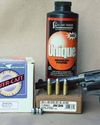
The Problem with Low Pressure Loads
Bullets & Brass
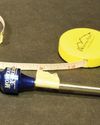
Measurements for Rifle Handloading
Handy Techniques for Accurate Ammunition
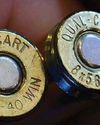
THE BRASS RING
In Range
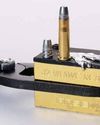
Semi-custom Bullet Moulds
Mike's Shoot in' Shack
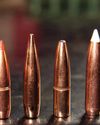
REVISITING THE 6.5 -06 A-SQUARE
Loading New Bullets and Powders
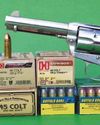
Cimarron Stainless Frontier .45 Colt
From the Hip
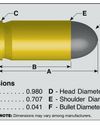
9x18mm Makarov
Cartridge Board
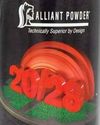
Alliant 20/28
Propellant Profiles
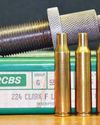
.224 Clark
Wildcat Cartridges